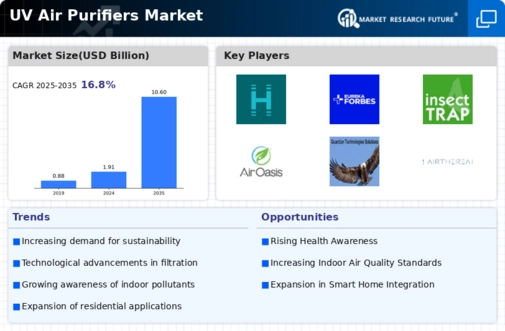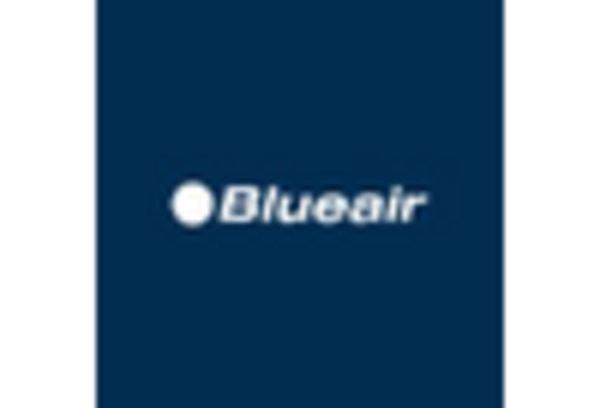Market Trends
Key Emerging Trends in the UV Air Purifiers Market
The UV air purifiers market is experiencing several noteworthy trends that reflect the evolving preferences and demands of consumers. One prominent trend is the increasing emphasis on health and wellness. As individuals become more health-conscious, there is a growing demand for products that contribute to a healthier living environment. UV air purifiers, with their ability to neutralize airborne pathogens, allergens, and pollutants, align with this trend by providing a proactive solution for maintaining clean indoor air.
The ongoing COVID-19 pandemic has accelerated a trend towards heightened awareness of indoor air quality. With the virus's ability to spread through airborne particles, consumers are increasingly turning to UV air purifiers as a preventive measure. This trend is expected to persist, with a continued focus on creating safer indoor spaces and reducing the risk of respiratory infections. UV air purifiers are positioned as a valuable tool in this ongoing battle against airborne pathogens.
Environmental sustainability is emerging as a key trend in the UV air purifiers market. Consumers are expressing a growing interest in eco-friendly products that have minimal environmental impact. Manufacturers are responding by incorporating sustainable materials, energy-efficient technologies, and environmentally conscious production processes into their UV air purifiers. This trend reflects a broader global shift towards responsible consumption and environmental stewardship.
Smart technology integration is becoming increasingly prevalent in UV air purifiers. The market is witnessing a surge in products that feature smart sensors, connectivity, and automation. These advancements allow users to monitor and control their air purifiers remotely, adjust settings based on real-time air quality data, and receive alerts. The integration of smart technologies not only enhances user convenience but also aligns with the broader trend of interconnected smart home ecosystems.
Another significant trend is the continuous innovation in UV-C light sources and purification technologies. Manufacturers are investing in research and development to improve the efficiency and effectiveness of UV air purifiers. This includes advancements in UV-C LED technology, which is not only more energy-efficient but also provides a safer alternative to traditional mercury-based UV-C lamps. These innovations contribute to the market's dynamic landscape, offering consumers more reliable and high-performance options.
Customization and personalization are emerging as trends in the UV air purifiers market. Manufacturers are recognizing the diverse needs of consumers and are introducing products with customizable features. This includes adjustable purification settings, various fan speeds, and the ability to target specific pollutants. The trend towards customization allows users to tailor their air purifiers to suit individual preferences and address specific air quality concerns.
Increasing market competition is fostering a trend of affordability and accessibility. As more players enter the UV air purifiers market, companies are striving to offer cost-effective solutions to reach a broader consumer base. This trend is making air purifiers more accessible to a wider audience, driving market growth and adoption.
Aesthetic considerations are also influencing market trends, with manufacturers focusing on design and visual appeal. UV air purifiers are no longer solely functional devices but are also being designed to complement modern interiors. Sleek and stylish designs are becoming more prevalent, catering to consumers who prioritize both performance and aesthetics in their home appliances.
















Leave a Comment